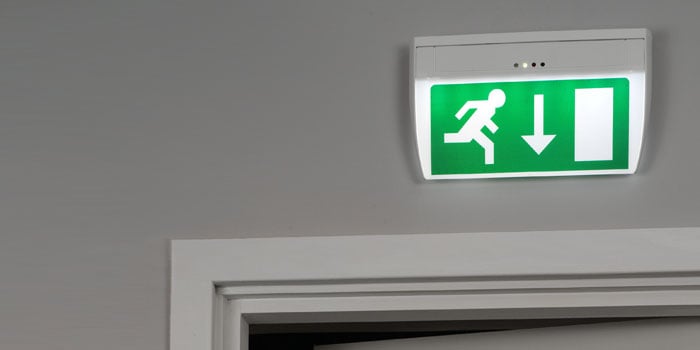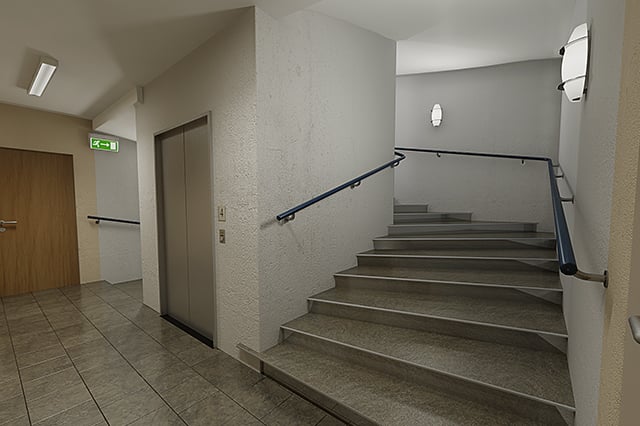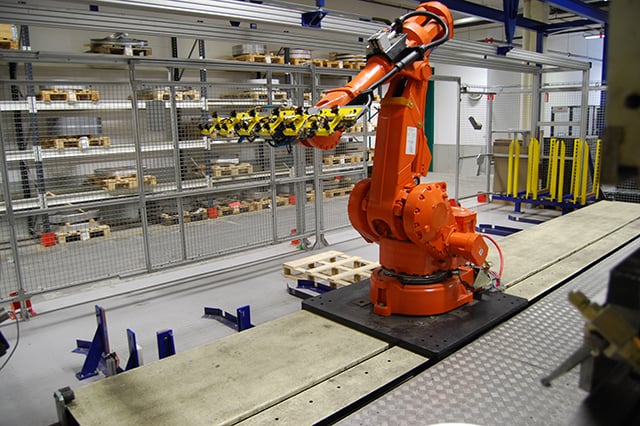
Emergency lighting
The performance of emergency lighting systems is specified in the standard EN 1838. In the standard, requirements are described for different environments and application areas, evacuation routes, anti-panic lighting and the lighting of high-risk areas.

Evacuation routes
An evacuation route requires at least 1 lx at the floor in the centre of the evacuation route and 0.5 lx in the surrounding area. Changes in direction and/or stairs need to be highlighted with an increased lighting level. Stairways should also be illuminated. In places where rescue equipment is located e.g. fire extinguishers, alarm buttons or first-aid cabinets, the lighting requirement increases to 5 lx.
The ratio of high to low lighting strength should be a maximum of 40:1. Therefore it is unsuitable to use a few strong light-points as emergency lighting in an evacuation route.
Normally, the lighting requirements necessary for an evacuation route cannot rely solely on safe condition signs. Often a combination of safe condition signs and correctly placed emergency luminaires is needed with suitable luminous flux in emergency mode.
 Open areas/anti-panic lighting
Open areas/anti-panic lighting
Anti-panic emergency lighting is intended to make it easier for people in the premises to find an evacuation route. A lighting strength of at least 0.5 lx is required in such areas. Here too the ratio between highest and lowest lighting strength must not be greater than 40:1.
High-risk areas

The high-risk area requires considerably more light in emergency mode than evacuation routes and anti-panic areas. The requirement is at least 15 lx or 10 % of the lighting strength normally required for the location. The ratio between the highest and lowest lighting strength should be a maximum of 10:1. When 1500 lx is required for normal operation on the task area, the lighting strength in emergency mode must be at least 150 lx.
The reason that the requirements are relatively high for this area is that dangerous processes, e.g. industrial robots, must be turned off correctly before rescue personnel can enter the area.